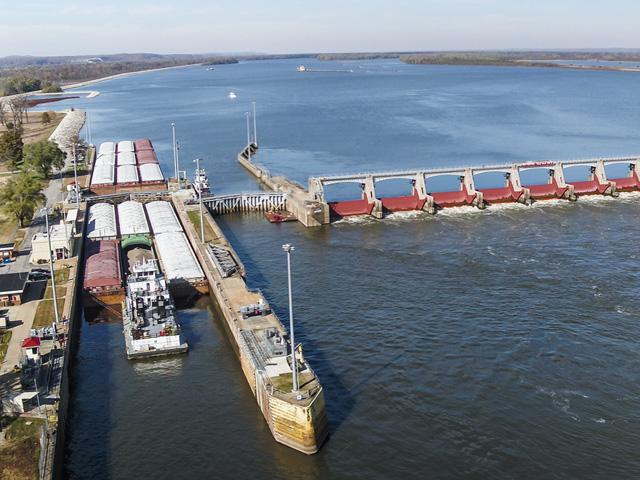WRDA Bill Close to Final Passage
Congress Passes New WRDA Bill With Project to Protect Texas Coastline
WASHINGTON (DTN) -- Congress approved funding for an extensive Texas coastal protection project as part of the Water Resources Development Act (WRDA).
As the House of Representatives tries to clean off its slate to adjourn, lawmakers fused the two-year reauthorization of the $38 billion WRDA with the authorization bill for the Department of Defense, making it an $850 billion bill. The House voted in a bipartisan 350-80 to send the massive package to the Senate. The two-thirds vote allowed the House to bypass a longer floor debate on the bill.
The House also overwhelmingly passed a rural disaster aid bill.
The WRDA bill, at about $37 billion in spending, funds U.S. Army Corps of Engineer projects, including ports, locks and dams, and dredging operations.
This time around, the WRDA bill funds a Texas coastal protection project, dubbed the "Ike Dike," that would be designed to protect the Texas gulf coast, and its major oil infrastructure, from future hurricanes. WRDA authorizes $21.4 billion of the total project cost of $34.4 billion with a non-federal match of nearly $13 billion expected.
P[L1] D[0x0] M[300x250] OOP[F] ADUNIT[] T[]
In Michigan, Congress approved $3.2 billion for the Corps to build a new Soo Locks on the St. Marys River on the border with Canada.
Among other major projects was $2.4 billion as part of a $6.3 billion dredging project for ports in New Jersey and New York.
For inland waterway projects, the bill makes permanent a change made two years ago lowering the matching funds for lock and dam projects from 50% to 35% for the Inland Waterways Trust Fund.
The Army Corps of Engineers will authorize up to $40 million on coastal and river restoration demonstration projects on the lower Mississippi River meant to help reduce the hypoxia zone in the Gulf of Mexico. The plan on the lower Mississippi would require state and local governments to come up with a list of projects over the next two years along with other stakeholders. Those projects would focus on reducing erosion and controlling sediment, restoring eco-systems and adjusting the channel on the river, as well as requiring a way to use dredging material. Projects would get priority if they improve water quality or reduce hypoxia in the lower part of the river and Gulf of Mexico.
Congress also wants the Corps to form a working group of experts and stakeholders to assess how to recharge aquifers around the country. The study would include non-federal organizations, including Tribes, to look at the feasibility of managed recharge for aquifers.
The WRDA bill has more than 300 separate provisions, including dozens of studies around the country for potential new Corps projects, and ending authorization for some projects that never got off the ground.
Congress also created a new cooperative agreement for western states to examine water projects such as reservoirs.
The University of Missouri is approved to conduct an analysis to improve water management and flood resiliency for the lower Missouri River basin and Upper Mississippi River basin. The study also authorizes a hydrology report on the upper Mississippi River and Illinois River.
RURAL DISASTER AID
On a 406-8 vote, the House on Thursday also passed the Disaster Assistance for Rural Communities Act. The bill essentially allows the Small Business Administration to provide disaster loans in rural areas declared as a disaster if there is significant uninsured damage in the area. The SBA would offer the loans if the state or tribal government asks for the aid. The damage would apply to any home, small business, private non-profit or agricultural cooperative that has suffered significant damage, considered a 40% loss of value.
Chris Clayton can be reached at Chris.Clayton@dtn.com
Follow him on Twitter @ChrisClaytonDTN
(c) Copyright 2022 DTN, LLC. All rights reserved.




